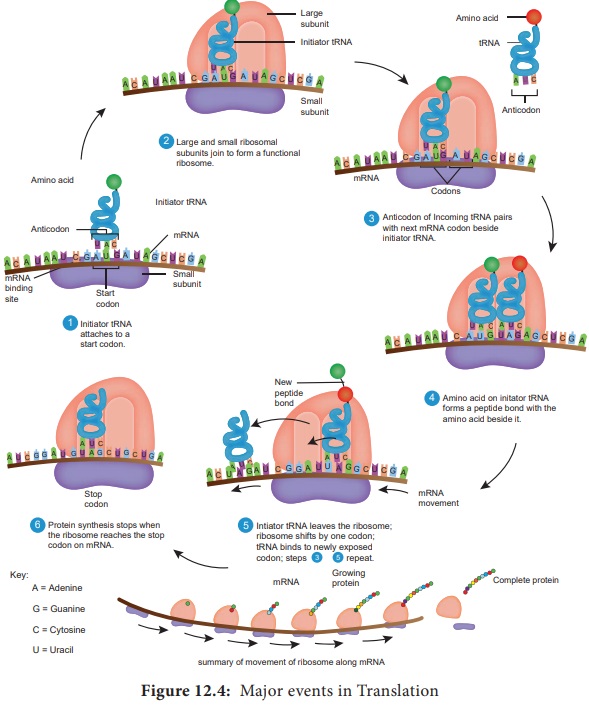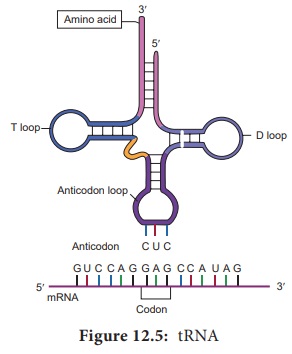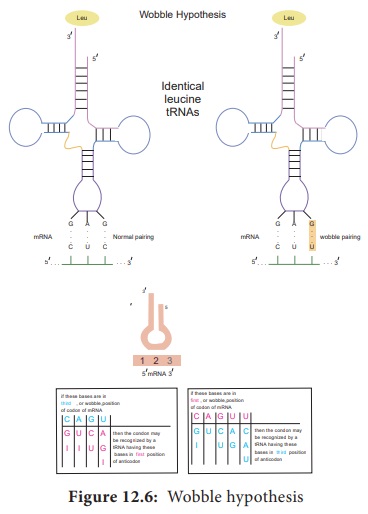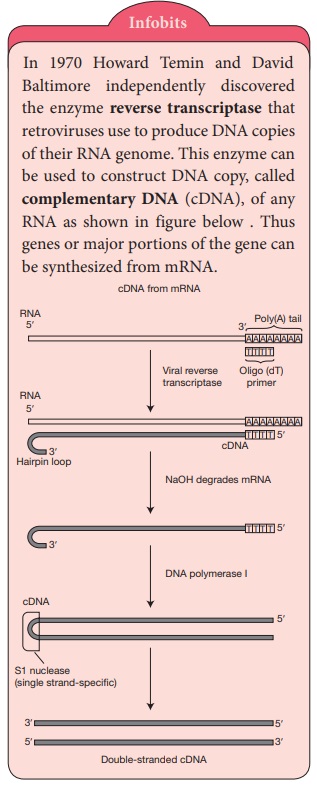Microbial Genetics - Translation | 12th Microbiology : Chapter 12 : Microbial Genetics
Chapter: 12th Microbiology : Chapter 12 : Microbial Genetics
Translation
Translation
RNA is translated from the 5′ end of the molecule toward the 3′ end. Polypeptides are synthesized from the amino terminus toward the carboxyl terminus, by adding amino acids one by one to the carboxyl end. Not all the base sequences in an mRNA is translated into amino acid sequences of polypeptides. Initiation of polypeptide synthesis may begin hundreds of nucleotides from the 5′ – P terminus of the RNA. The section of untranslated RNA before the region encoding the first polypeptide chain is called a leader, which in some cases contains regulatory sequences that influence the rate of protein synthesis. The major events in translation are (Figure 12.4).

1. An
mRNA binds to the surface of a protein synthesizing particle, the Ribosome.
2. The tRNA – amino acid complexes (made by the aminoacyl tRNA synthetases) bind sequentially, one by one, to the mRNA molecule that is attached to the ribosome.
3. Peptide
bonds are made between successively aligned amino acids.
4. Finally
the chemical bond between the tRNA and its attached amino acids is broken and
the completed protein is removed.
• The 3′ terminal
of the tRNA molecule (Figure 12.5) is covalently linked to the amino acid
corresponding to the particular mRNA codon .

• When an
amino acid has become attached to a tRNA molecule, the tRNA is said to be
acylated or charged
• An
important feature of initiation of polypeptide synthesis in both prokaryotes
and eukaryotes is the use of a specific
initiating tRNA molecule. In prokaryotes this tRNA molecule is acylated
with the modified amino acid N – formyl methionine (fMet). This tRNA is often
designated tRNAfMet. Both tRNAfMet
and tRNAMet recognize the codon AUG,
but only tRNAfMet is used for
initiation. All prokaryotic proteins while being synthesized have fMet at the
amino terminus. However, this amino acid is frequently deformylated or removed
later.
• The usual form of translation unit is a polyribosome or polysome wherein an mRNA is covered with ribosomes.
Redundancy and the Wobble Hypothesis
The
identity of the third base of a codon appears to be unimportant. (The first
base in a codon is at the 5′ end and
the third base is at the 3′ end).
Wobble refers to the less stringent requirement for base pairing at the third
position of the codon than at the first two positions. That is the first two
bases must follow Watson and Crick base pairing rule (A with U, or G with C),
but the third base pair can be of a different type (for example, G with U). The
Wobble hypothesis explains the pattern of redundancy in the code in that
certain anticodons (For example, those containing U and G in the first position
of the anticodons) can pair with several codons during translation (Figure
12.6).


Related Topics